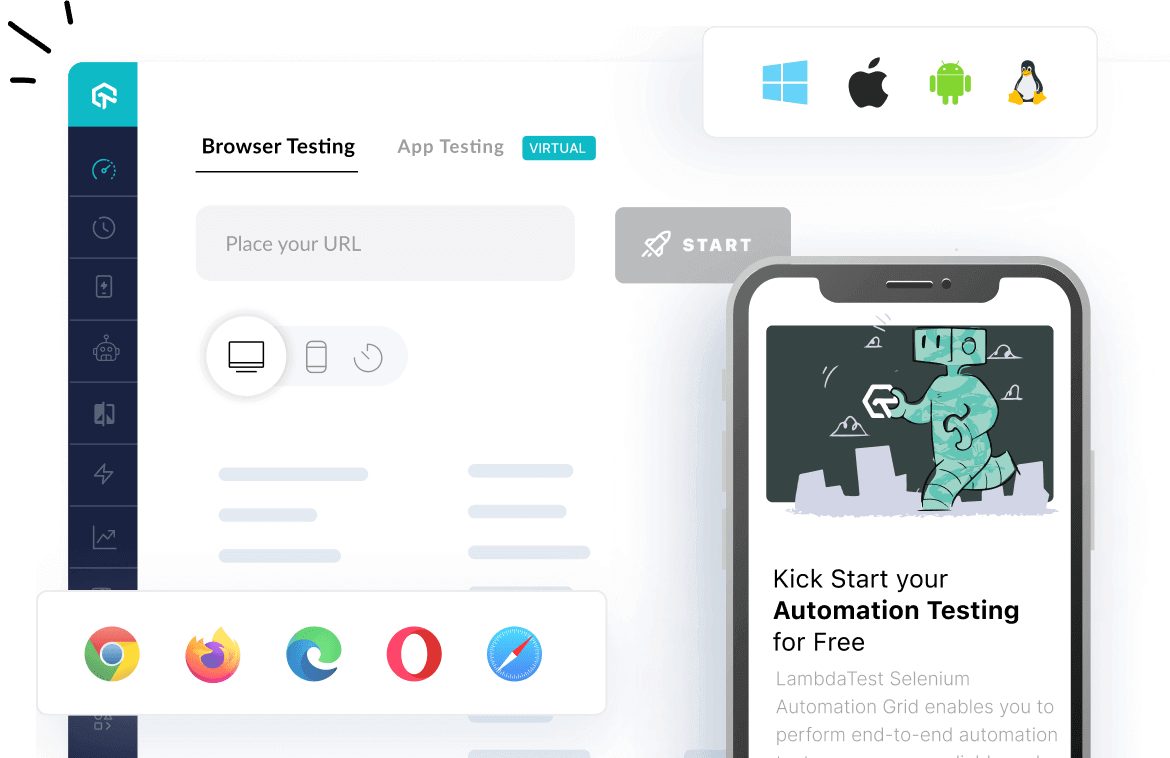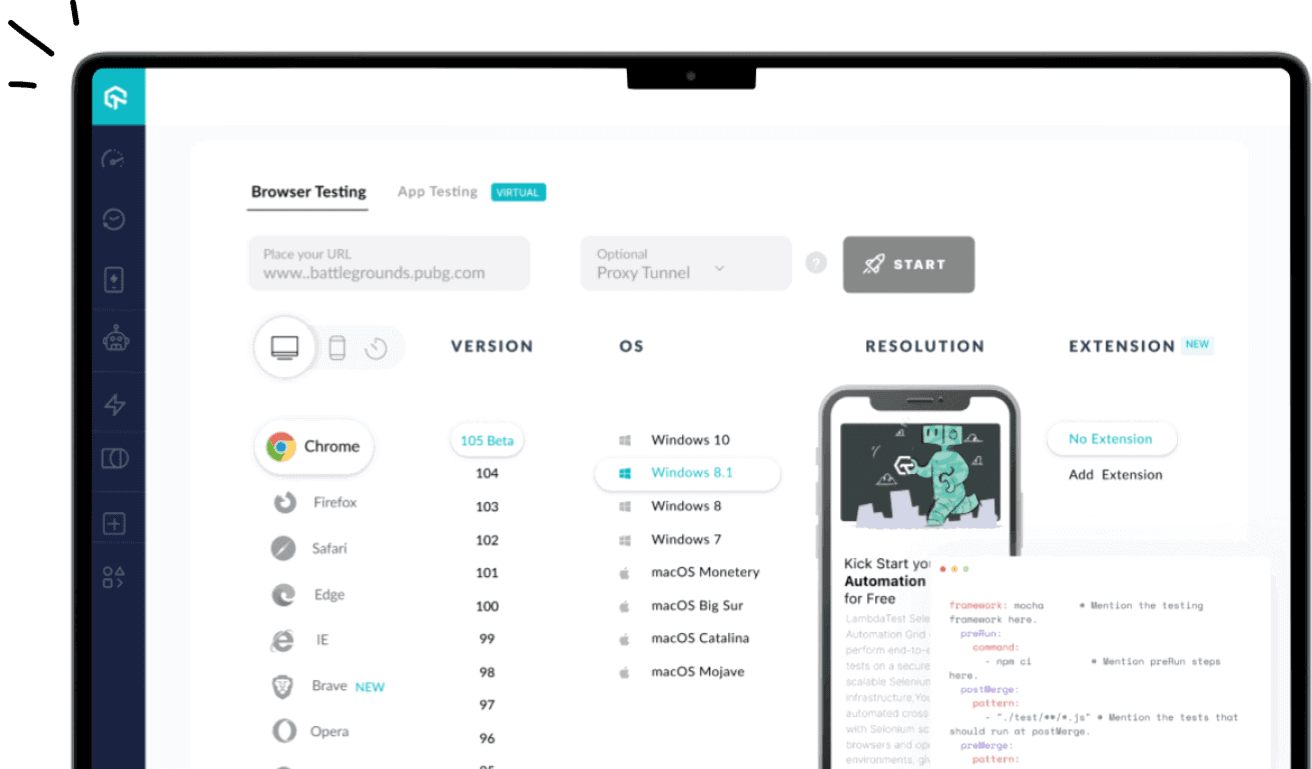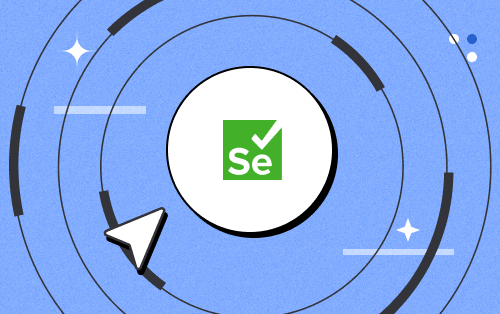- Testing Basics
- Home
- /
- Learning Hub
- /
- Test Scenario Tutorial
- -
- September 16 2023
Write Test Scenario : Complete Walkthrough With Examples And Best Practices.
Learn how to document use cases and user actions in software testing. Explore test scenarios that depict user interactions with websites and apps, covering various user situations. Improve your testing strategy today.
OVERVIEW
A test scenario, or a scenario test, serves as documentation for a specific use case. It outlines the key steps and conditions to be tested and provides a structured approach for evaluating the functionality of a system or application. Test scenarios are essential to verify that the software performs as expected and meets the requirements given by the stakeholders or clients. It helps identify potential issues, validate user interactions, and ensure overall quality and reliability.
It is known that massive competition exists in releasing robust and high-quality software applications in today's digital era. To ensure this, performing software testing is very important to detect any flaws and errors in the developed software applications.
But where to begin with software testing? Here, the test scenario has a crucial role in software testing to check and verify the software applications' performance, functionality, and usability of the software applications. It acts as a guideline for software testers, offering a structured path to uncover vulnerabilities and ensure a seamless user experience.
In this tutorial, we will detail the test scenario by highlighting its significance, types, examples, best practices, and others and knowing these crucial concepts in test scenarios that will help you get started with software testing.
Let's begin to understand the idea of what is a test scenario?
What is a Test Scenario?
To understand the test scenario, first, let us know what is meant by "scenario." In the software development industry, a system denotes the trajectory or journey a user follows while engaging with an application or website. The responsibility of a tester involves exploring user interactions with functionalities and identifying potential issues that may arise.
A "test scenario" is a collection of manual or automated test cases to assess a project's positive and negative aspects. These scenarios mirror how end users could employ software applications, allowing developers to validate alignment with client expectations. They offer an overview of testing requirements for a QA company.
A test scenario describes a situation in which the software will be utilized, coupled with an outline of anticipated behavior. This aims to assess how the software applications handle user inputs, respond to varying data types, and interface with external systems.

Illustratively, consider an eCommerce website, LambdaTest Playground, as the software in question. A test scenario might encompass inspecting the steps of adding a product to the cart, making a payment, and receiving a confirmation email. This test scenario delineates the necessary actions and their expected outcomes. Hence, when creating a test scenario, testers must place themselves in the users' place, delving into real-world scenarios. The software will be encountered upon its public release. Tester effectively embodies the role of an end-user, navigating genuine scenarios and applications using test cases.
Objective and Scope of Test Scenario
The optimal approach to creating a test scenario involves gathering input from clients, stakeholders, and developers for a genuine and precise test scenario. This strategy facilitates the comprehensive coverage of all potential user situations, enabling thorough evaluation of the software's operational pathways. The core objective of a test scenario is to evaluate the system's overall performance from an end-user's point of view, granting insight into how the software will navigate in real-world scenarios.
The significance of a well-defined test scenario must be considered. They function to ensure all requisite tests are executed, guaranteeing a comprehensive assessment of the software applications before their launch. This proactive approach mitigates the likelihood of glitches and flaws, securing software that aligns with user demands and specifications. Now, let us learn more about it by defining its key features.
Features of a Test Scenario
Test scenario needs to be clearly defined to ensure that software testing is heading in the right direction and checks all the components and complete functionality of the software application. Thus, to achieve this, knowing its key features will be beneficial.
- Test scenarios serve as sequential instructions that direct testers during the testing sequence.
- By streamlining product evaluation, test scenarios lower complexity and repetition.
- Test scenarios involve an in-depth discussion of tests, subsequently summarized in linear statements.
- They consist of a sequence of operational steps.
- Test scenarios are essential when time constraints hinder test case creation, and team consensus is attained through comprehensive linear methods.
- Employing test scenarios yields time-saving benefits.
- These scenarios facilitate effortless maintenance due to the simplicity and autonomy of incorporating, modifying, or appending them.
- They are devised to optimize time efficiency.
- Their value amplifies when time constraints hinder the creation of test cases and when the team endorses comprehensive linear scenarios.
- Functioning as linear directives, they guide testers throughout the testing progression.
Difference between Test Case and Test Scenario
| Test Scenario | Test Case |
|---|---|
| Contains high-level documentation describing end-to-end functionality to be tested. | Contains specific test steps, data, and expected results for testing application features. |
| Focuses more on "what to test" than "how to test." | Emphasizes both "what to test" and "how to test." |
| Usually, a one-liner leads to potential ambiguity during testing. | Includes detailed steps, prerequisites, expected outcomes, eliminating ambiguity. |
| Derived from test artifacts like BRS, SRS, etc. | Mostly derived from test scenarios, with multiple cases possible from one scenario. |
| Supports agile testing of end-to-end functionality. | Facilitates exhaustive testing of an application. |
| Represents high-level actions. | Represents low-level actions. |
| Requires comparatively less time and resources for creation and testing. | Demands more resources for test case documentation and execution. |
Why Create a Test Scenario?
Quality Analysts (QA) must never skip creating test scenarios when involved in software testing. This, is crucial to know why building a test scenario is essential. Here are some reasons.
- Ensuring Comprehensive Test Coverage: Creating a test scenario guarantees the thorough testing of all possible test cases, leaving no aspect untested.
- Gaining Approval from Multiple Stakeholders: The test scenario can be endorsed by diverse stakeholders such as Business Analysts, Developers, and End Users. This process ensures that the application Under Test undergoes exhaustive evaluation, verifying its functionality for prevalent use cases.
- Facilitating Work Effort Estimation: The test scenario offers a rapid means of assessing the testing workload. This assessment aids in formulating end users' proposals or efficiently allocating workforce resources.
- Identifying Critical End-to-End Transactions: They help identify pivotal end-to-end transactions or genuine software application uses. This focus ensures that pivotal functionality is thoroughly evaluated.
- Exploring Program Functionality Holistically: The test scenario assumes a pivotal role in comprehending the complete end-to-end operation of the software. This holistic perspective is vital for a comprehensive evaluation of software functionality.
However, there are certain conditions where you cannot create a test scenario. Let us learn those from the below section.
Types of Test Scenarios
Two types of test scenarios are involved in software testing, which include positive and negative test scenarios.
- Positive Test Scenario
- Negative Test Scenario
Positive Test Scenario
In this test process, the behavior and function of software applications are tested as per their intended function and with valid data input. This type of testing focuses on scenarios where users follow the standard, expected flow of actions. For example, if you are testing any eCommerce website, the following are the optimistic test scenarios.
- Adding products to the shopping cart.
- Proceeding to checkout.
- Completion of purchasing.
Negative Test Scenario
In this type of test, the main emphasis is on verifying how software applications handle or manage unexpected inputs and test conditions. Here, testers use invalid data and incorrect inputs, leading to incredible functionality and errors.
Continuing with the eCommerce website example, an adverse test scenario might be involved.
- Attempting to add a product to the shopping cart with a negative quantity or entering an invalid credit card number during checkout.
Let us understand this with different examples.
When to Not Use Test Scenarios?
While test scenarios offer valuable assistance, there are instances where their creation might need to be revised. The test scenario might not be suitable.
- The tested application is characterized by instability, excessive complexity, or significant delays.
- Projects adhere to Agile methodologies like Kanban or Scrum, which might not align with creating test scenarios.
- Situations involving regression testing or the implementation of new bug fixes arise. In these cases, the reliance on test scenarios might not be optimal. Instead, comprehensive documentation of test scenarios from prior test cycles becomes essential, especially for maintenance projects.
Samples of Test Scenario
Let's discuss the test scenario for the LambdaTest login page.
Login Module Test Scenario

Incorporate the following aspects within this scenario
- Validate system behavior while validating email ID and password.

Now, simulate the scenario (with incorrect credentials)
- Inputting the incorrect email ID and password to assess the error message response.

Evaluate the functionality of buttons for logging in and signing up.
- Signup: Select any of the options given on the login page to create a new account on LambdaTest. In this example we will be using ‘Log in with Google’.

- Login : If you have already held an account on LambdaTest enter your email and password.
Sign Up Module Test Scenario
Execute the following actions in this scenario.
- Verify form submission with all fields filled, excluding the 'I am not a robot' checkbox.
- Leave a mandatory field blank and attempt to sign up, validating the display of the corresponding message box for completion.
- Test the 'Hide and Show' icon functionality for password input.
- Attempt to sign up without accepting the 'Terms and Conditions.'
- Check the functionality of the 'Sign in' button redirects to the sign-in page.
- Validate the operability of links leading to the terms and conditions page.
- Confirm that the email field rejects entries lacking '@domain' and '.com.'
- Once all fields are completed, ensure receipt of a verification code on the provided email account to verify and access the system.
Presenting a Test Scenario Template
A test scenario document may include the following sections.
- Module: This section pertains to the specific module or component within the application under consideration.
- Requirement ID: Although optional, this field can be utilized to establish a link to the Software Requirements Specification (SRS) for enhanced traceability.
- Test Scenario ID: This field is a unique identifier for each test scenario, aiding in efficient tracking and management.
- Description: The description field serves to articulate the objective and purpose of the given test scenario. This narrative elucidates the role and scope of the system within the testing process.

Advantage of Test Scenario
A test scenario plays a crucial role in prioritizing the user base of your technological programs. They grant you valuable insight into how your creations are perceived, enhancing your confidence in the software application's intended functionality.
The significant advantages of performing test scenarios for the software applications are explained below.
- Complete testing of the software application: Writing a test scenario gives you flexibility as you can test every feature and unit of software applications.
- Identifies different ways to improve: The outcome of the test scenario shows different areas or components of the software application requiring refinement or improvement before being released into the market. Considering the end-users views and requirements helps improve the software application's features.
- Efficiency in development: If you develop similar types of software applications, you can use the outcome of the test scenario of previous software applications. For example, by understanding novel ways to utilize your application, you can tailor product features to tap into prevailing consumer trends, resulting in higher-quality offerings.
Types of Scenario Testing
Based on the above example of different test scenarios, you must anticipate that additional software application functionality has respective test scenarios. In terms of this scenario, testing addresses the evaluation of the performance of software applications under diverse real-world scenarios.
There are many types of scenario testing that all QA must be aware of so that no component or functionality of the software applications is skipped from being tested. Some of those testing types are highlighted below.
Functional testing scenario: In this scenario testing type, the main focus is given to the functionality of the software application and verifying that it works in line with user requirements, for example.
Gaming App:
- Scenario: Test the functionality of game mechanics, user interactions, and scoring systems.
- Expected Outcome: Players should be able to interact with the game environment, follow game rules, and achieve scores or rewards based on their performance within the game.
Performance testing scenario :In this testing type, the performance of the software application is evaluated in heavy load conditions. It is done by simulating real-world usage patterns and finding application errors, for example.
Cloud-Based Document Collaboration Tool:
- Scenario: Simulate multiple real-time users collaborating on a single document with concurrent edits and updates.
- Objective: Assess the tool's responsiveness and ability to synchronize changes seamlessly without data conflicts.
Security testing scenario: This scenario testing type addresses the security of the software applications by checking the way it safeguards them from Malware attacks and other security vulnerabilities. For example:
Web Application Security Testing:
- Scenario: Attempt to inject malicious code (SQL injection) into the login form's input fields to gain unauthorized access to the application's database.
- Objective: Identify if the application's security measures prevent unauthorized access and if it effectively sanitizes user inputs to prevent SQL injection attacks.
Usability testing scenario: This scenario testing type addresses the usability of the software applications, like how practical and user-friendly the applications are. For example.
Mobile Banking App:
- Scenario: Ask users to perform common tasks like checking their account balance, transferring funds, and paying bills using the app's interface.
- Objective: Assess how easily users can navigate the app, complete transactions, and access essential information without confusion.
What are the Prerequisites for Formulating a Test Scenario?
Formulating a test scenario typically requires a comprehensive grasp of the requirements, a clear understanding of the test objectives, and the establishment of a suitable test environment. These prerequisites encompass more details, which we will explore further including.
- Thorough Preparation: The initial phase of crafting scenarios is pivotal. Testers should collaborate with stakeholders like Clients, Business Users, BAs (Business Analysts), or Developers. Once these test scenarios are established, subsequent test cases can be generated for each scenario.
- Comprehensive Understanding: Testers need a grasp of the business and functional requisites of the application. Since test cases stem from test scenarios, the precision of scenarios is crucial. An oversight in a test scenario can result in omitted test cases, underscoring the pivotal role of scenario writers in project development. A single error might result in substantial cost and time repercussions.
- Thorough Requirement Review: Testers must meticulously scrutinize the requirements. In uncertain or queries, reaching out to POCs (Points of Contact) for clarification is essential.
- Project Workflow Familiarity: A company's grasp of the project workflow is imperative. If available, relating wireframes to the requirements helps understand and streamline the process.
How to Create a Test Scenario-Step-by-Step Guide?
Knowing the fundamental concepts of the test scenario, it is now essential to know different approaches to writing or creating test scenarios. Creating a practical test scenario for your application involves several key steps. Here's a four-step process to guide you through the process.

1. Identify and Analyze the Software Requirements
Initiate the test scenario process by carefully reading the documentation that outlines the product's requirements, as established by the System Under Test (SUT). These documents encompass the Business Requirements Specification (BRS), the Software Requirements Specification (SRS), and the Functional Requirements Specification (FRS). Supplementary resources such as instruction manuals and relevant books related to your application can also be consulted. These materials aid in identifying the specific functions that the test scenario needs to assess.
2. Anticipate the user's actions
Encompass potential and actions of the end to reflect how they might interact with your product post-purchase. Drawing insights from the requirement documents, envision user activities corresponding to each specification. Creating scenarios based on the program's intended purpose can be particularly useful. For instance, if your application is an internet search engine, consider users' desire to access images and search for web articles.
Additionally, it contemplates various ways in which consumers could exploit the product's features, enabling the identification of potential vulnerabilities and enhancing security. A comprehensive test scenario covers all aspects of the software and explores all conceivable possibilities to scrutinize functions across multiple domains effectively.
3. Formulate Test Scenario
Construct scenarios encompassing every conceivable user action applicable to your program's operation. Assign numerical references to the identified user activities you intend to test, facilitating the assessment of the thoroughness of your testing approach. During this phase, revisiting the requirement documents ensures that the user actions you've outlined are comprehensive. Verify the correlation between user activities and software functionality.
4. Align Scenarios with Requirements
Verify the alignment of each included user action with the stipulations outlined in the requirement documents. Develop a Traceability Matrix visually demonstrating these connections, validating that your methodology aligns with the client's expectations. Elaborate on the user actions you've defined to evaluate the software's overall performance comprehensively. Narrow your testing observations into a single document, providing stakeholders with a holistic assessment of your test scenario's effectiveness in a centralized format.
Best Practices to Create Test Scenarios
To create test scenarios, it is important to include certain best practices. Some of those are as follows.
- Every test scenario must be linked to at least one requirement or user story, following the guidelines of the Project Methodology.
- Before crafting a test scenario that validates numerous requirements simultaneously, establish a test scenario specifically targeting the assessment of that requirement independently.
- Refrain from generating excessively intricate test scenarios with multiple requirements.
- Given the potential abundance of scenarios and the associated cost of execution, opt to run only selected test scenarios following customer priorities.
The Role of Real Devices in Test Scenario
The fundamental purpose of the test scenario revolves around observing how various software application components perform in authentic user environments. Most software and applications are utilized by real-life users on real devices rather than relying on emulators or simulators.
Consequently, using real devices is necessary, leaving no room for exceptions. Moreover, executing test scenarios on real devices, the latest cutting-edge devices, and older legacy systems is imperative. This approach acknowledges that only some possess the resources (or inclination) to employ the most current hardware. Therefore, a significant probability exists that the device used to operate the application in question could be several years old or older.
Considering the unpredictable variety of devices used to access websites and apps in today's fragmented landscape, conducting tests across as many devices as possible is crucial for optimal results. Without a comprehensive in-house device lab that's regularly updated and meticulously maintained, the wiser choice is to leverage cloud-based testing infrastructure like LambdaTest.
LambdaTest is an AI-powered test orchestration and execution platform that offers over 3000+ real browsers, devices, and OS combinations accessible worldwide, enabling convenient testing regardless of location and time. Utilize their real device cloud for reliable testing and accurate testing results, ensuring speed and precision. Here are some of the fantastic features of LambdaTest.
- Experience seamless execution of your Selenium test automation scripts across a dynamic Selenium Grid, encompassing desktop, Android, and iOS browsers.
- Accelerate your development cycles while ensuring precision through automated cross browser testing, facilitated by LambdaTest.
- Effortlessly assess your native and hybrid web mobile applications using LambdaTest's comprehensive online real device cloud, featuring emulators and simulators for virtual mobile devices.
- Access an extensive array of Windows and Mac operating systems, covering legacy and up-to-date browsers, empowering you with diverse testing options.
- Immerse yourself in the world of the latest mobile browsing experiences by testing your websites and web applications on cutting-edge Android and iOS mobile operating systems.
- Streamline your testing procedures by transitioning away from in-house device labs, welcoming unmatched scalability into your mobile app testing efforts.
Subscribe to our LambdaTest YouTube Channel to catch up with the latest tutorials around Selenium testing, Cypress testing, and more.
Conclusion
In the Software Testing Life Cycle (STLC), comprehending and defining the test scenario is pivotal. Establishing a solid groundwork for test scenarios can significantly enhance software quality. The terms "test cases" and "test scenario" are often used interchangeably. This guide provides an in-depth exploration of test scenarios, encapsulating these insights.
The test scenario is the least detailed documentation – concisely depicting a user's objective during software utilization. For instance, it could involve testing the successful program logout through closure. Typically, a test scenario necessitates diverse testing methodologies for comprehensive coverage. Based on this succinct description, a tester might select exit the program via the menu, terminate it using the task manager, power off the computer, or observe its behavior upon memory exhaustion and crashing.
As test scenarios offer minimal testing guidance, they empower testers with maximum flexibility. Embracing test scenarios within your testing approach is a positive stride, fostering the creation of top-notch software that meets and surpasses customer expectations.
On this page
- Overview
- What is a Test Scenario?
- Difference between Test Case and Test Scenario
- Why Create a Test Scenario?
- Types of Test Scenarios
- When to Not Use Test Scenarios?
- Samples of Test Scenario
- Presenting a Test Scenario Template
- Advantage of Test Scenario
- Types of Scenario Testing
- What are the Prerequisites for Formulating a Test Scenario?
- How to Create a Test Scenario-Step-by-Step Guide?
- Best Practices to Create Test Scenarios
- The Role of Real Devices in Test Scenario
- Frequently Asked Questions
Frequently asked questions
- General
Author's Profile

Nazneen Ahmad
Nazneen Ahmad is an experienced technical writer with over five years of experience in the software development and testing field. As a freelancer, she has worked on various projects to create technical documentation, user manuals, training materials, and other SEO-optimized content in various domains, including IT, healthcare, finance, and education. You can also follow her on Twitter.
Reviewer's Profile

Shahzeb Hoda
Shahzeb currently holds the position of Senior Product Marketing Manager at LambdaTest and brings a wealth of experience spanning over a decade in Quality Engineering, Security, and E-Learning domains. Over the course of his 3-year tenure at LambdaTest, he actively contributes to the review process of blogs, learning hubs, and product updates. With a Master's degree (M.Tech) in Computer Science and a seasoned expert in the technology domain, he possesses extensive knowledge spanning diverse areas of web development and software testing, including automation testing, DevOps, continuous testing, and beyond.
Did you find this page helpful?
More Hubs
Try LambdaTest Now !!
Get 100 minutes of automation test minutes FREE!!











